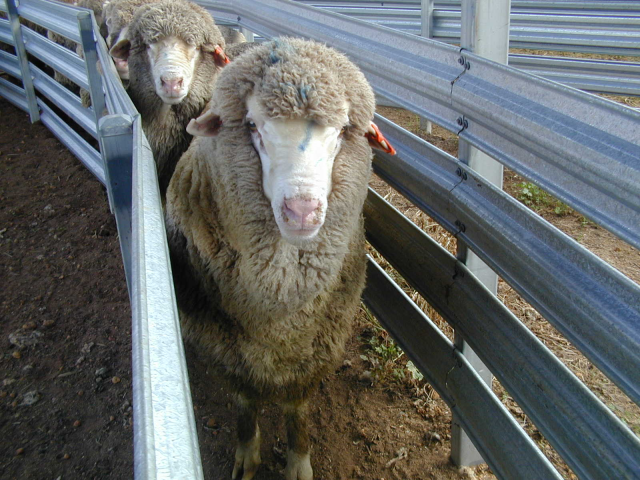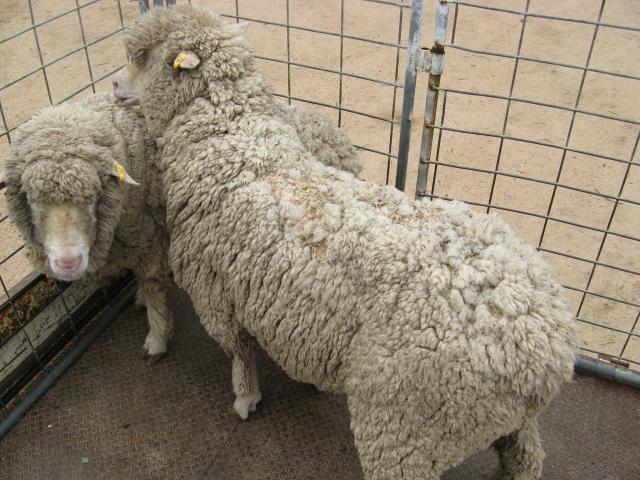Photosensitivity
Sporadic photosensitisation of sheep occurs in association with the grazing of a range of plant species, including various grasses, cereals and legumes, but the incidence is generally very low. Over the past 10 years, isolated cases of photosensitisation have occurred in sheep grazing both Casbah and Mauro biserrula throughout the wheatbelt.
Photosensitivity is a state of heightened sensitivity to sunlight caused by the presence of photodynamic chemicals in the skin, cornea and mucous membranes. Photosensitivity may result in photosensitisation, which is the dermatitis and conjunctivitis produced in a sensitised animal after exposure to sunlight.
The main types of photosensitisation are:
- Primary; resulting when animals ingest particular plant compounds that are photodynamic.
- Secondary; resulting when toxins in plants cause liver damage, which in turn results in the accumulation of the photodynamic compound, phylloerythrin, in the blood.
Biserrula and photosensitisation
There is currently no evidence that liver damage occurs in sheep grazing biserrula pastures. Therefore, the assumption is that biserrula contains photodynamic chemicals that when consumed in sufficient quantity will cause a primary photosensitisation. Photosensitisation in sheep grazing biserrula has only occurred when the plant has made up greater than 40% of the pasture on offer.
There is also some evidence indicating that lambs may be more susceptible to developing photosensitisation. It appears that biserrula pastures may only transiently contain high concentrations of the photodynamic compounds. Outbreaks of photosensitisation have occurred in late winter or early spring, when the green plant is growing rapidly and is about to flower. There is no evidence of photosensitisation having occurred when the dead plant is grazed in summer.
Clinical signs of photosensitisation
Photosensitivity can occur within a few days of sheep moving on to biserrula pastures though it may develop over several weeks. The first indication that animals may be photosensitised are:
- restlessness
- head shaking
- rubbing
- seeking out of shade.
Early signs of photosensitisation include swelling of the ears, eyelids, mulesed area (tail), backline and muzzles. These are all the most exposed parts of the body. If allowed to progress these areas will become reddened, inflamed, and the overlying skin will die and peel off, exposing raw tissue underneath. In severe cases lambs may lose the tips or all of their ears, a general break in the wool can occur and sheep may appear lame due to inflammation of the coronets.
Management
Farmers should adopt a cautious approach (regular monitoring) to the management of sheep grazing biserrula, especially when it dominates the pasture composition. If photosensitisation is identified early and the animals are immediately removed from the pasture to shady areas (or shedded if convenient), then the animals will normally recover well. Deaths due to biserrula photosensitisation are very rare.
The following practices will help to reduce the risk of photosensitisation when sheep are grazed on biserrula pastures:
- Rotationally graze biserrula for short periods, especially during the high risk period of late winter and early spring.
- Provide alternative grazing, preferably of grassbased pastures or standing oat crop rather than other legume dominant pastures.
- Feed the sheep hay while they graze biserrula.
- In particular, do not graze lambs or recently shorn sheep on biserrula for periods greater than two weeks. Many growers that have experienced incidents of photosensitivity have learnt to live with the problem and say that it is easy to manage.
Research
Current research is trying to identify the primary photosensitising compounds that are suspected to be present in biserrula. If they can be identified, breeding programs may be able to reduce or eliminate their presence in new cultivars. If any animals do develop photosensitisation while grazing biserrula, farmers should notify their local Department of Primary Industries and Regional Development office for advice and possibly to assist with continuing research.
Acknowledgments
We would like to thank the growers who took part in the biserrula case studies: Cameron Levett of Carnamah, Phil Bear of Dowerin, Andrew Chambers of Ravensthorpe, Jason Stokes of Chapman Valley, John and Gordon McDougall of Tincurrin Alf Niven of Carnamah and John Munckton of York. Also thanks to Noel Bubner from Balco Australia for supplying the straw feed test results.


